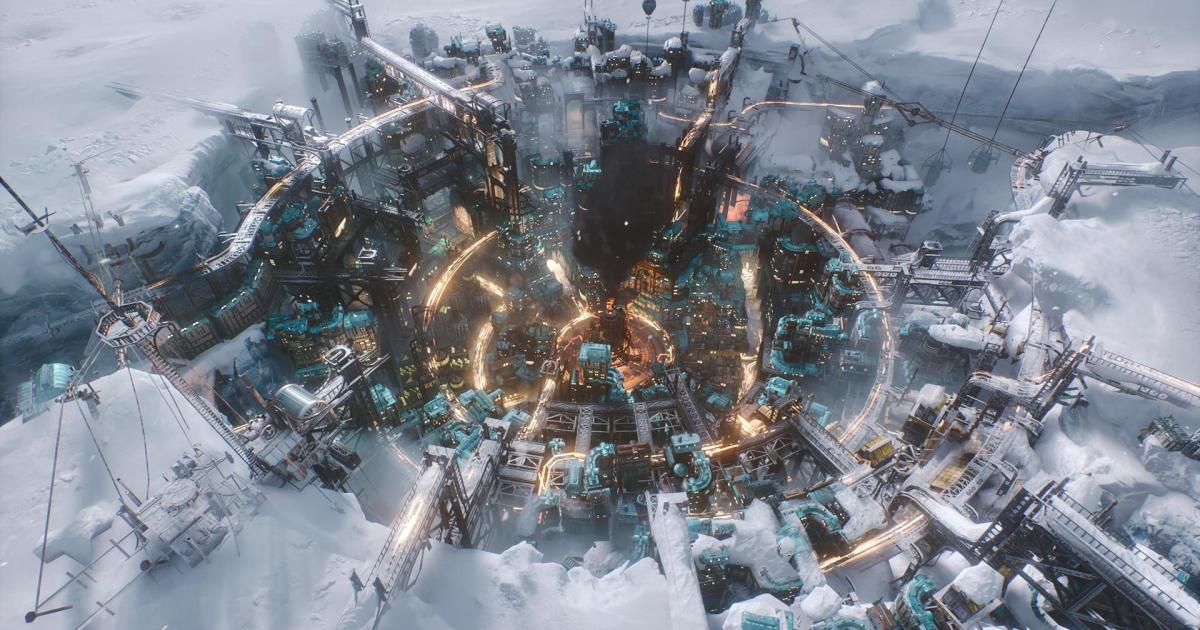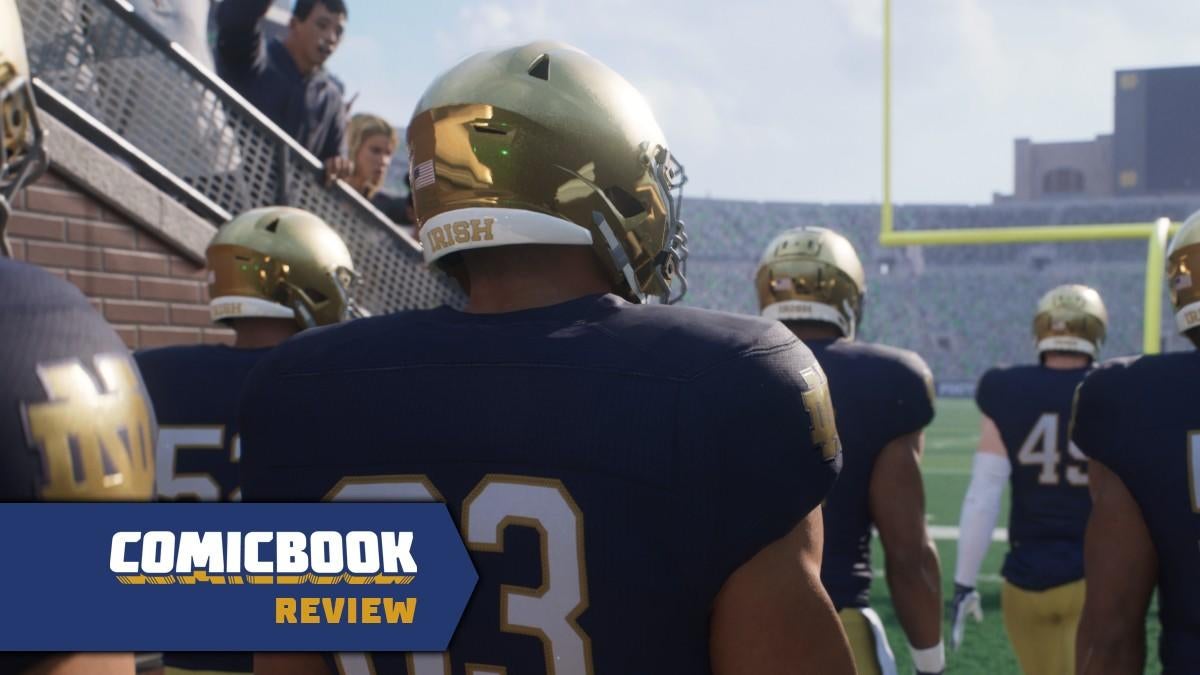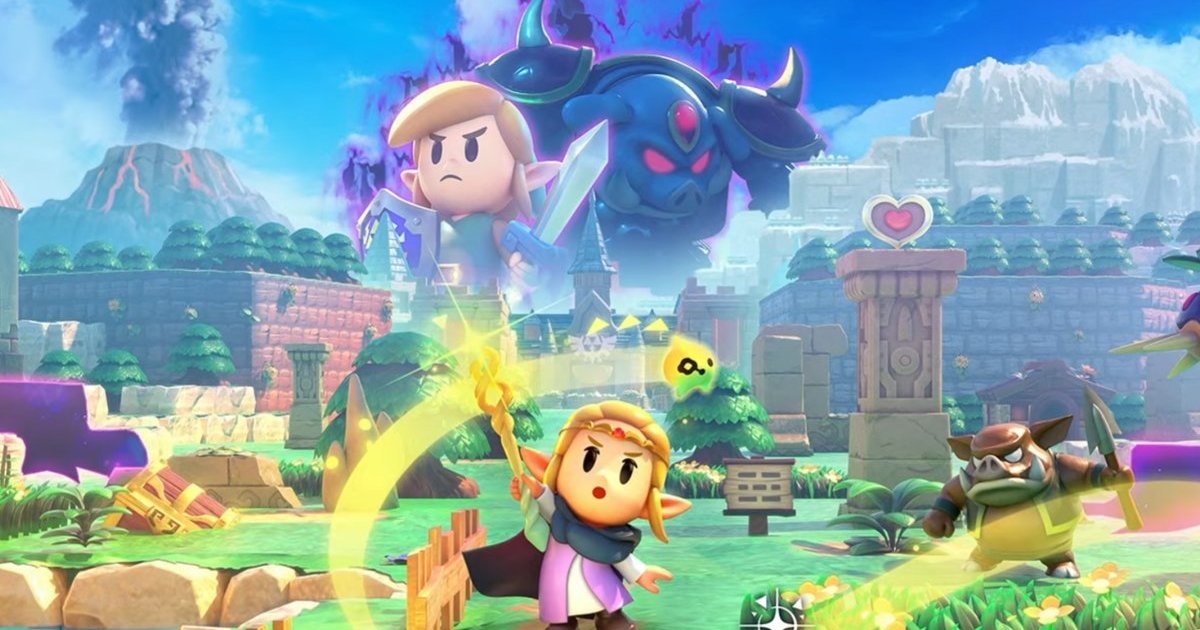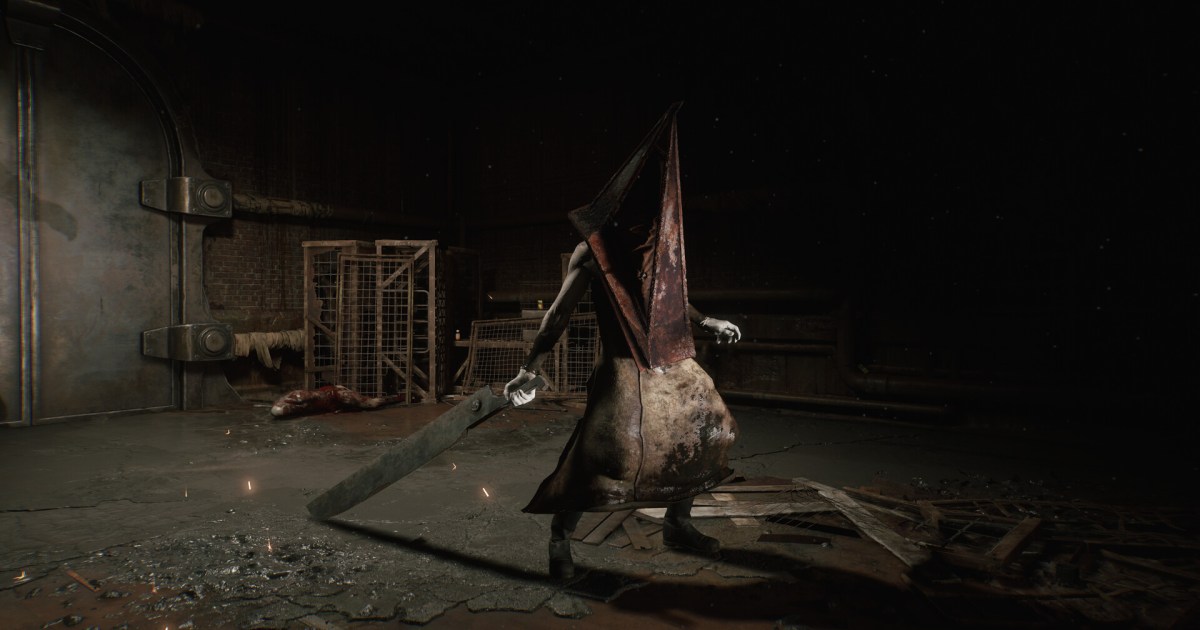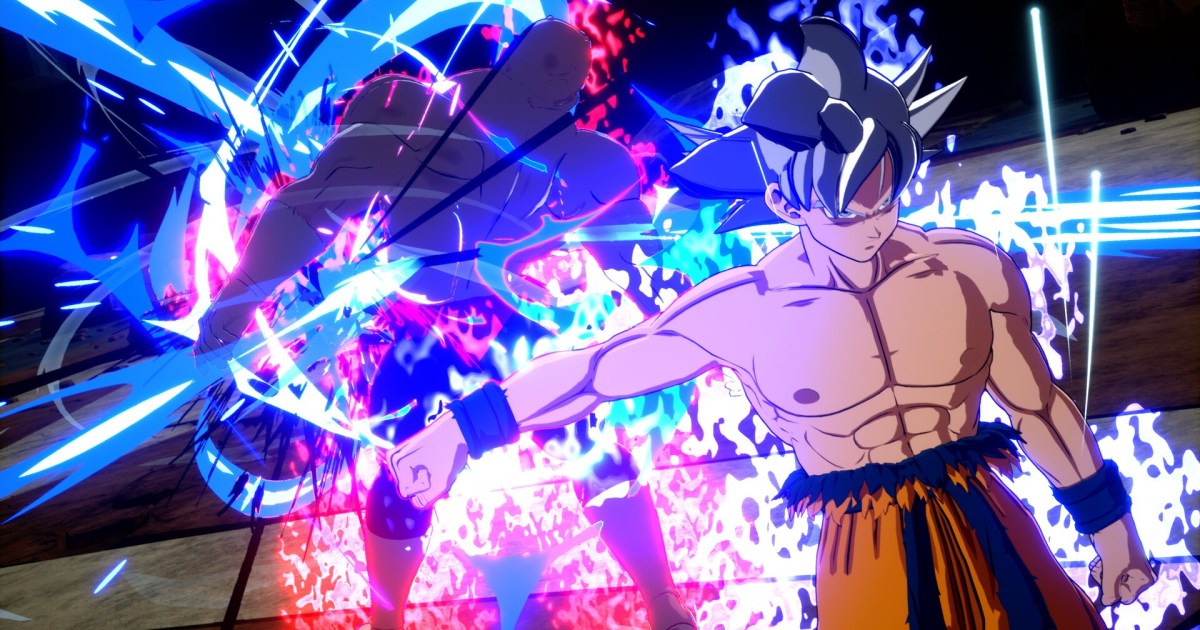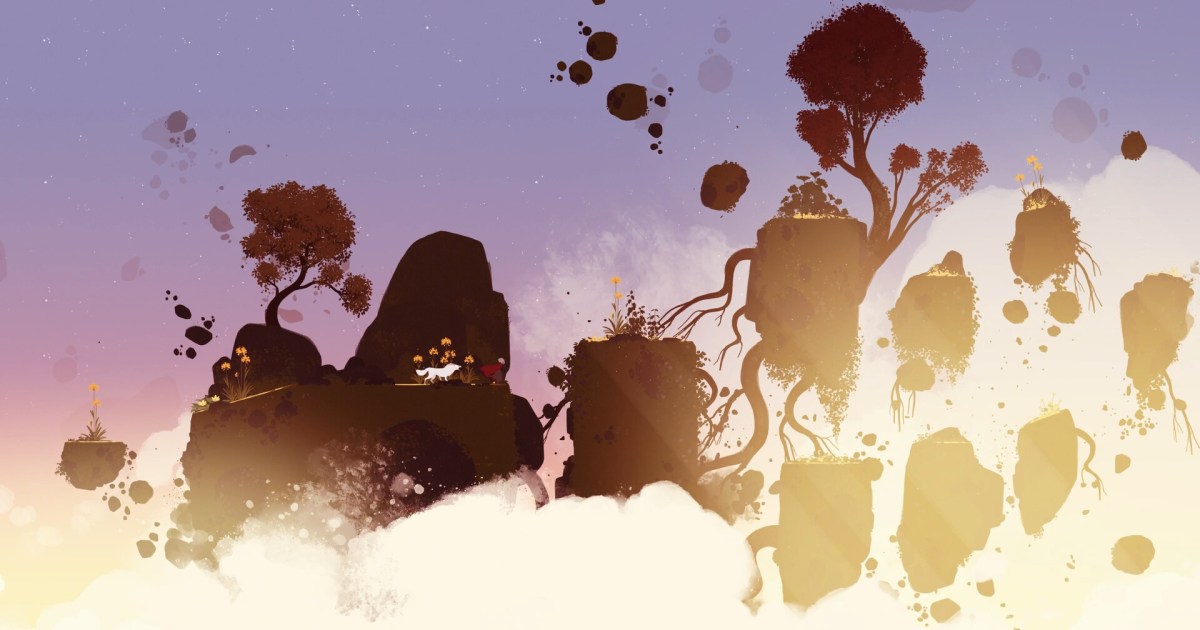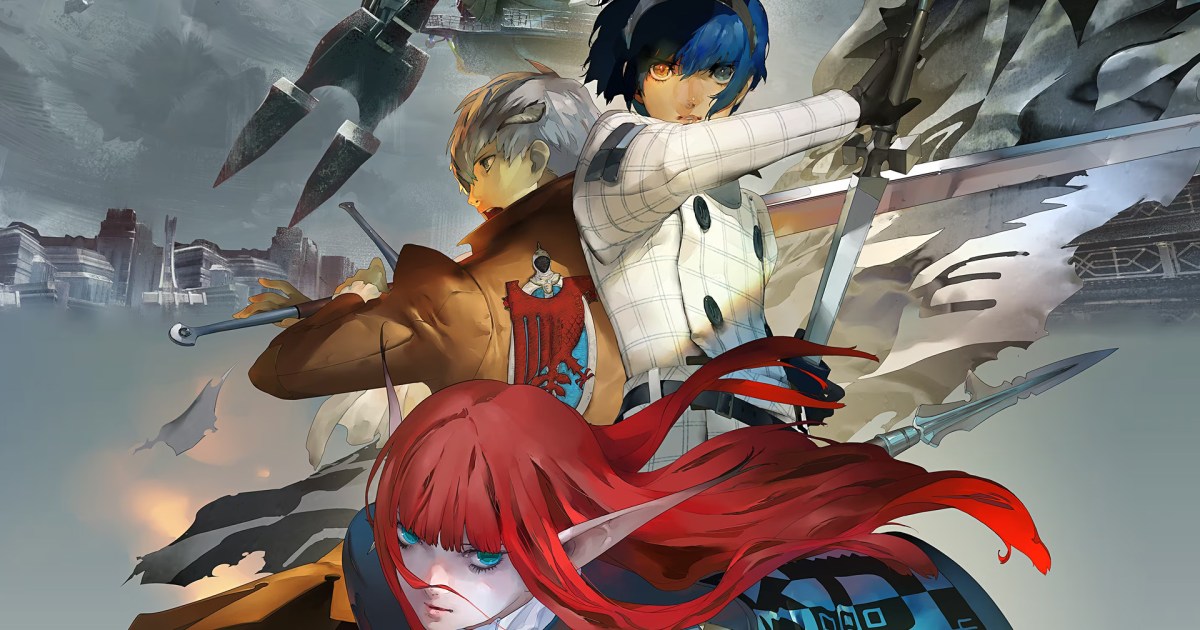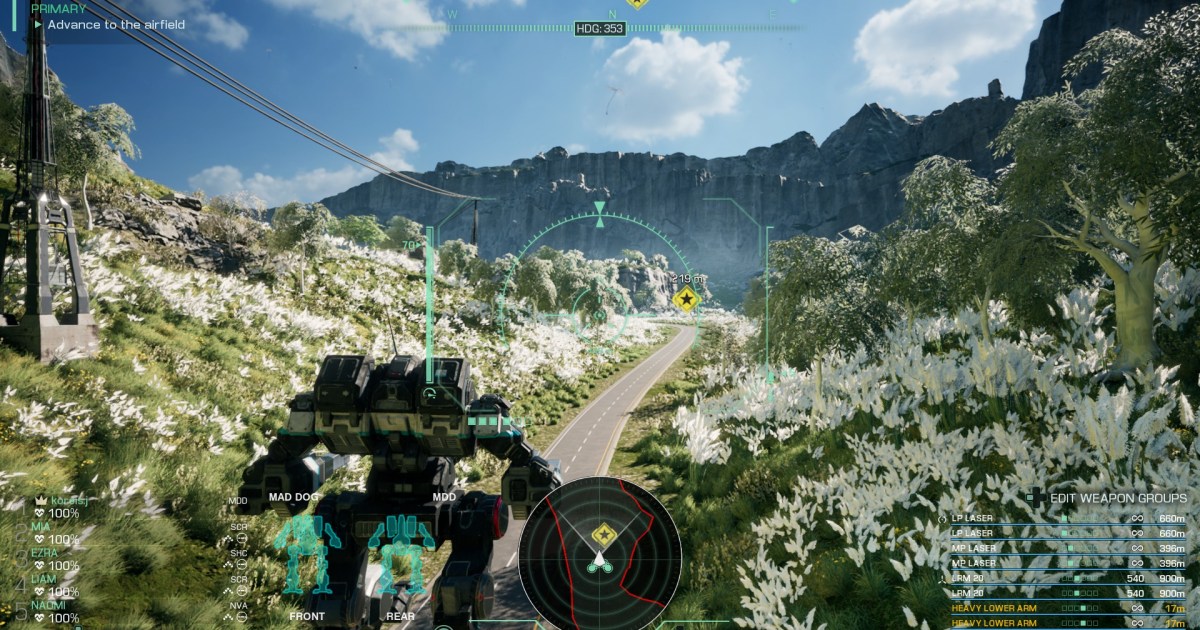Conflict defines Frostpunk 2, the sequel to 11 Bit Studios’ acclaimed city-builder survival game. From warring factions to agonizing decisions, the struggle to prevent societal collapse kept me riveted. This review explores the sequel’s strengths and weaknesses, examining its expanded scope, political complexities, and thematic shift.
Thirty years after the original Frostpunk, the Captain is dead, and you, the Steward, inherit the daunting task of leading a thriving settlement through a new ice age. Interconnected mechanics and features present formidable challenges, and while many gameplay changes are welcome, UI issues and thematic shifts occasionally detract from this otherwise compelling strategy sequel.
From Micro-Management to Macro-Strategy
Frostpunk 2’s most immediate difference lies in its scale. The original focused on meticulous micro-management of individual buildings and citizen assignments, reminiscent of classic city-builders. The sequel, however, adopts a macro-strategic approach. Players now deploy Frostbreaker teams to clear ice and construct entire districts spanning multiple hexagonal tiles, managing populations in the tens of thousands. This shift from micro to macro significantly alters the gameplay experience.
Districts have upkeep costs in resources and heat, demanding careful placement to optimize bonuses. Whether housing, food production, or resource extraction, strategic planning is paramount. The systems feel both familiar and innovative, drawing comparisons to 4X strategy titles like Civilization 6 with its emphasis on exploration, expansion, exploitation, and survival.
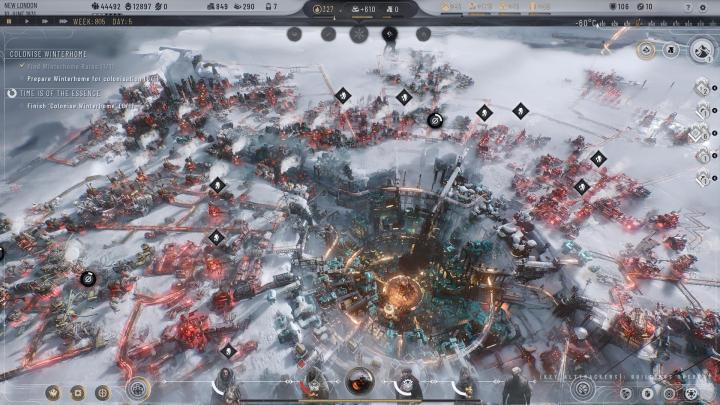 A city is colonized in Frostpunk 2.Expanding your city in Frostpunk 2 requires strategic planning and resource management.
A city is colonized in Frostpunk 2.Expanding your city in Frostpunk 2 requires strategic planning and resource management.
Hubs and extensions further enhance gameplay, offering yield increases and new functionalities. Filtration systems combat squalor, academies accelerate research, prisons contain dissent, and excavators tap into deep underground resources. The wealth of options allows for impressive growth, transforming a fledgling crater settlement into a sprawling metropolis.
Exploring and Colonizing the Frozen Wasteland
Exploration is crucial in Frostpunk 2, with scouts venturing into the Frostlands to discover resources, event chains, and potential colony sites. Managing multiple settlements adds another layer of complexity, requiring resource allocation and oversight. This 4X strategy element makes the sequel surprisingly more approachable than its predecessor. Instead of facing crippling workforce shortages after population losses, players can leverage resources from colonized regions.
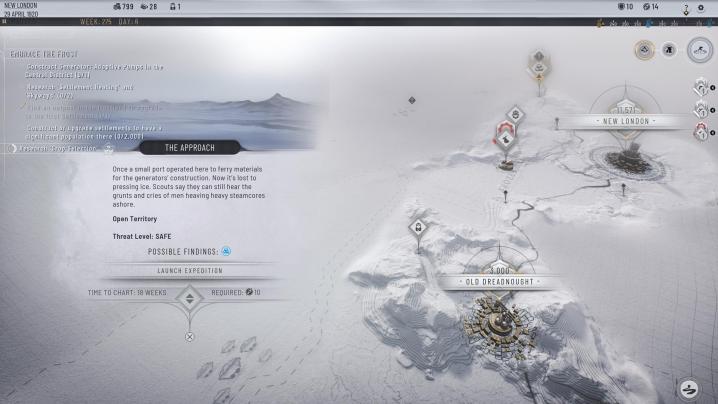 An event appears on screen in Frostpunk 2.Random events and encounters add an element of unpredictability to the gameplay.
An event appears on screen in Frostpunk 2.Random events and encounters add an element of unpredictability to the gameplay.
Progress, however, comes at a price. Factions, each with their own ideologies, introduce significant conflict. Moderate groups like the New Londoners and Frostlanders present manageable challenges, while radical factions like the Stalwarts and Pilgrims clash fiercely. Balancing the needs and demands of these groups is a core gameplay element.
The Council system reflects this political complexity. Passing laws requires negotiation, bribery, and strategic maneuvering to sway delegates. This intricate process simulates the shift from a unified community under a single leader to a fractured society with competing agendas. The Steward must constantly balance their vision for the city with the demands of various factions, a delicate tightrope walk that adds depth and tension to the gameplay.
Interface Challenges and Performance Hiccups
Despite its visually stunning depiction of a frozen world, Frostpunk 2’s UI needs refinement. Parsing information during crises, such as unexpected deaths or locating specific buildings, can be frustrating. Managing multiple colonies can also lead to oversight and neglected issues in the main settlement. Clearer tooltips and side panels, similar to those in Civilization 6 or Crusader Kings 3, would greatly improve information accessibility.
Performance issues also arise, even on high-end systems. While the game remained stable, occasional slowdowns can disrupt the flow of gameplay.
A Shift in Tone and Theme
Frostpunk 2’s biggest challenge lies in its thematic shift. The original excelled in presenting stark moral dilemmas with profound consequences, forcing players to confront difficult choices. While the sequel retains elements of this, the focus shifts from individual suffering to satisfying the demands of political groups. This tonal change lessens the personal impact of moral choices, potentially alienating long-time fans.
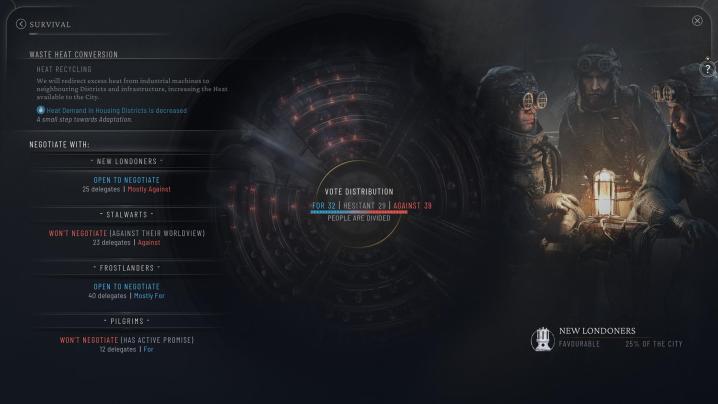 A voting distribution screen appears in Frostpunk 2.The Council system introduces political maneuvering and negotiation into the gameplay.
A voting distribution screen appears in Frostpunk 2.The Council system introduces political maneuvering and negotiation into the gameplay.
Conclusion
Frostpunk 2 is a complex and ambitious sequel that expands upon its predecessor in meaningful ways. The introduction of districts, factions, and the Council system adds depth and strategic complexity. However, the thematic shift and UI issues may not resonate with all players. Despite these shortcomings, the game’s core survival gameplay remains engaging, offering a challenging and rewarding experience for fans of city-builder and strategy games.
Frostpunk 2 was tested on PC.



